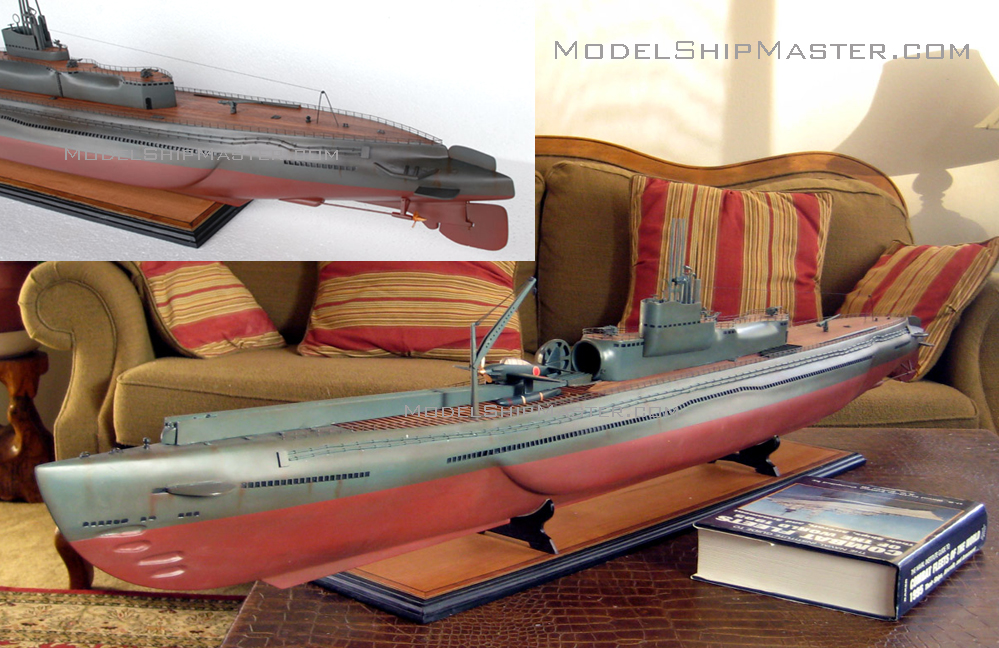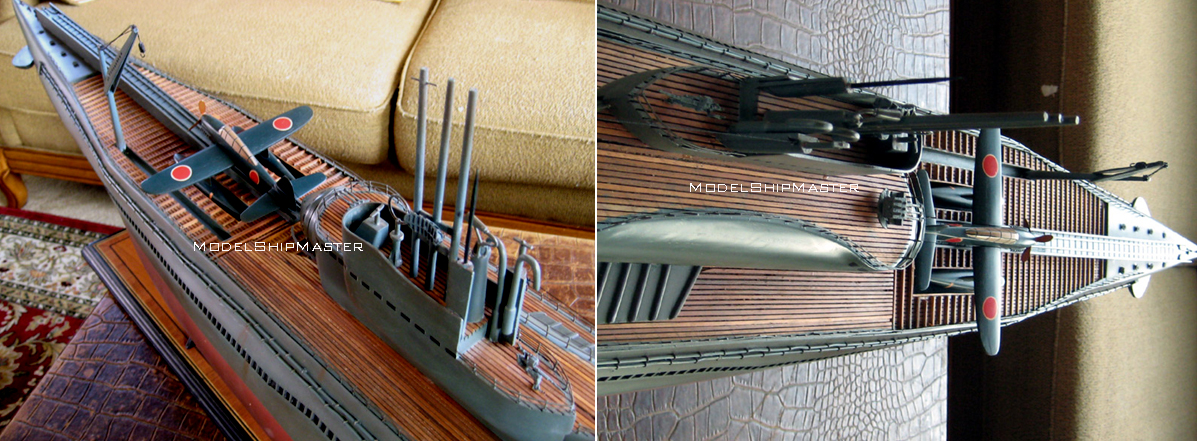|


256-bit encryption
$500,000 protection

|
I-400 Submarine
I-400 submarine was the world's largest submarine
and remained the largest ever built until the
construction of nuclear ballistic missile submarines
in the 1960s. She
was actually a submarine aircraft carrier
that carried three aircrafts underwater to their
destinations. I-400 submarine was designed to
surface, launch their planes, then quickly dive
again before being discovered. For close-range
combat, she had 3 torpedoes.

The submarine I-400
could travel round-trip to anywhere in the world and
return. She was the brainchild of Admiral Isoroku Yamamoto, Commander-in-Chief of the Japanese
Combined Fleet. Shortly after the attack on
Pearl Harbor in December 1941, he conceived the idea
of taking the war to the United States mainland by
making aerial attacks against cities along the US
western and eastern seaboards using
submarine-launched naval aircraft. The first
target was the strategic Panama Canal, a journey
expected to take two months.
A fleet of 18
I-400 submarines was planned in 1942, and work
started
in January 1943. The actual costs of building
these crafts ran much higher than expected, and
within a year, following Yamamoto's death in April 1943, the number was
reduced to nine, then five and finally
three. Only I-400 submarine and I-401 actually entered
service; I-402 was completed five weeks before the
end of the war and never made it to sea.
The Panama Canal
strike called for four aircraft-carrying submarines
(I-400 submarine, I-401, I-13 and I-14.) At a point 185
km off the coast of Ecuador, the submarines would
launch their aircraft at 0300hrs on a moonlit night.
The Seirans, without floats, would fly at an
altitude of 4,000 m across the northern coast of
Colombia to the vicinity of Colón. Now on the
Caribbean side of the isthmus, they would turn
westward on a heading of 270 degrees, then angle
south-west and make their final approach to the
Canal locks at dawn. After completing their bombing
runs, the Seirans were to return to a designated
rendezvous point and ditch alongside the waiting
submarines where the aircrews would be picked up.
On April 1945, Captain
Ariizumi, the man appointed to carry out the attack,
decided the Seiran pilots would make kamikaze
ramming attacks against the gates. By June
5th, all four aircraft-carrying submarines had
arrived at Nanao Wan where a full-scale wooden model
of the Gatun Locks gate had been built and towed
into the bay. From June 15th the Seiran pilots
made practice daylight bombing runs against the
target. By 20 June, all training ended and the
operation was set to proceed.
However, all changed
when Okinawa fell. Fifteen American aircraft
carriers had assembled at the Ulithi atoll and the
Panama Canal mission was changed to help an attack
on the Ulithi base.
Japan surrendered
before the Ulithi attack was launched, and on August
22, 1945, the crews of the submarines were ordered
to destroy all their weapons. The torpedoes were
fired without aiming and the aircraft were launched
without unfolding the wings and stabilizers. When
I-400 submarine surrendered, the U.S.
crew was astounded at her size.
While
the U.S. Navy recovered and studied 24 submarines,
including the three I-400 submarines, they received a
message that the Soviets were sending an inspection team
to examine the submarines. So most of the submarines
were taken to a place about 60 km west of Nagasaki and
destroyed.
Only the most advanced were saved: I-401, I-201, I-203,
and I-400 submarine, were sailed to Hawaii for further study. Upon
completion of the inspections, they were scuttled near
Oahu in Hawaii by torpedoes from submarine USS Trumpetfish on June 4, 1946, to prevent the technology
from being made available to the Soviets who were
demanding access to them.
The Japanese were ahead of the Allies in many
aspects of submarine development and underwater
weapons. During the WWII, they had 30 different
classes of submarines. In many
ways the I-400 submarine was decades ahead of her time. Japanese torpedo "Long Lance" were the world's most
dangerous.

This primarily wood I-400 submarine model
features:
- Plank-on-frame,
hollow
hull construction, weighing less than
15 lbs (A solid hull of this model would be over
60 lbs
which needs two people to handle and a fortified
table to accommodate)
- Windows and portholes are cutouts (not black decals)
65" long x 15" tall x 9" wide (1/72 scale)
$4,950  Shipping and insurance in
the contiguous USA included.
Other places: $800 flat rate.
This model is in stock and
can be shipped within five business days. Shipping and insurance in
the contiguous USA included.
Other places: $800 flat rate.
This model is in stock and
can be shipped within five business days.
Other sizes? Just email us for a quote.
Learn more about the I-400 submarine here:
https://en.wikipedia.org/wiki/I-400-class_submarine
|